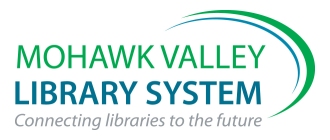 |
START WITH SCIENCE KITS
Science Programs for Children Ages 4 and 5 |
Objectives
- To show examples of pulleys, wheels and axles, levers, inclined planes, screws and wedges.
- To show how gears connect and work.
- To use a fulcrum and lever to practice with balance.
|
Books : (In kit)
- Changes by Pat Hutchins
- Machines by Ann and Harlow Rockwell
- Simple Machines by Deborah Hodge
|
Equipment : (In kit)
- 1 C-Clamp
- 2 Clothesline pulleys (1 nylon, 1 metal)
- 1 Box of Gears
- 1 Box of Building Set Gears
- 1 Pulley
- 1 Solid oak board (5’ x 1’)
- 1 Solid oak fulcrum (10: long triangle)
- 3 Wooden cars
- 1 race car with scoop seats
- 1 car with 2 window holes
- 2 truck with 1 window hole
- Wooden spools (1 bag for wheels on cars)
- 14 Wooden wedges (various sizes)
|
Resource Books : (Contact your local library to borrow)
- Ollerenshaw, Chris. Gears. Gareth Stevens Pub., 1994.
- Ollerenshaw, Chris. Levers. Gareth Stevens Pub., 1994.
- Wood, Robert W. What?: Experiments for the young scientist. TAB Books, 1994.
|
Bookmarks : (In kit)
- Paper copies of the bookmark are included in the kit. PDF and JPEG copies are available here.
- PDF – 4 bookmarks per page. Ready to print in color.
- JPG – single high quality jpeg image.
|
Program
- Objectives
- To show examples of pulleys, wheels and axles, levers, inclined planes, screws and wedges.
- To show how gears connect and work.
- To use a fulcrum and lever to practice with balance.
- Introduction
- What is a machine? Do you have any at home? Did you use any to get here?
- What is the power for machines? Can you run a machine yourself?
- Read CHANGES, CHANGES by Pat Hutchins. What machines did you see them use?
- A simple machine is one that helps you do a job with just a person as power. There are six simple machines: pulleys, wheels and axles, levers, inclined planes, screws and wedges. Use MACHINES, MACHINES by Anne and Harlow Rockwell to help point out simple machines and their use.
- Program
- Demonstrate use of pulleys with clothesline pulleys and rope. It works nicely if you have some sturdy overhead hook on which to hook the pulley, then kids can lift bags of books, each other, etc.
- Show screw with the C-clamp. Have a child try to hold a piece of paper between thumb and finger while you try to pull it away, which will be easy. Now have a child use the same thumb and finger to tighten the screw on the clamp to hold the paper in place. Try to pull the paper out – it will tear, but should not slide out since the clamp (screw) gives the added mechanical advantage of holding the paper, but the actual power to operate it is just a thumb and finger from a child.
- Wedges look like short inclined planes and have similar uses, but they can also be used for opening things wider, or lifting objects gradually higher. Try sliding one of the shallower wedges under the edge of a table or bookcase and watch it rise as you slide it farther in. Then slide in another wedge to raise it more and so on.
- You each have wedges in you. Your teeth are the same things. They are skinny at the end for biting, but get thicker up toward the gums as they wedge the bite of food off the bigger piece – think of eating an apple.
- Discuss inclined planes as sliding boards.
- Introduce wheels and axles with the little race cars and wooden spools. Show how they don’t work too well until wheels are added.
- Combine inclined plane with wheels and axles for lots of fun racing cars. Vary angle of board to change speed of cars.
- A lever helps to lift an object with a fulcrum underneath to help support it. Could any of you lift me? Let’s try. Take the big board and put the fulcrum in one of the grooves closer toward an end. Then stand on that end. Have a child stand near the opposite end. Is that enough? How many children does it take to lift the teacher? Does the amount change if the fulcrum is moved?
- Another lever is an age-old one often referred to as a catapult for sending rocks over castle walls. The modern day version is a spoon to send wads of paper across a school cafeteria. Teach what you want of the technique – the children enjoy it even though not all have the coordination for it.
- Adjust the board to be a teeter-totter (or see-saw) by moving the fulcrum to the center groove under the board. Have children stand at the ends of the board and see what it takes for them to balance – they may have to move forward or back, add another child, etc. Let them explore.
- General
- Space and a somewhat open area is nice for the cars so wheels don’t roll under too many objects.
- There is competition for the board – some want it to see-saw, others want it for the vehicles.
- The board is VERY sturdy.
- Some older children worked with the wedges at the end of the incline to make the landing for the cars more gentle so wheels stayed on longer and cars went further. Encourage such exploration.
|
Evaluation
Please print this evaluation, complete it and return to MVLS in the SWS red envelope.
Topics | About the Kits | Lending Policy

